Sunda clouded leopards sport gorgeous fur patterns, only exist in the wild on two Southeast Asian islands, and they weren’t discovered until the 21st century.
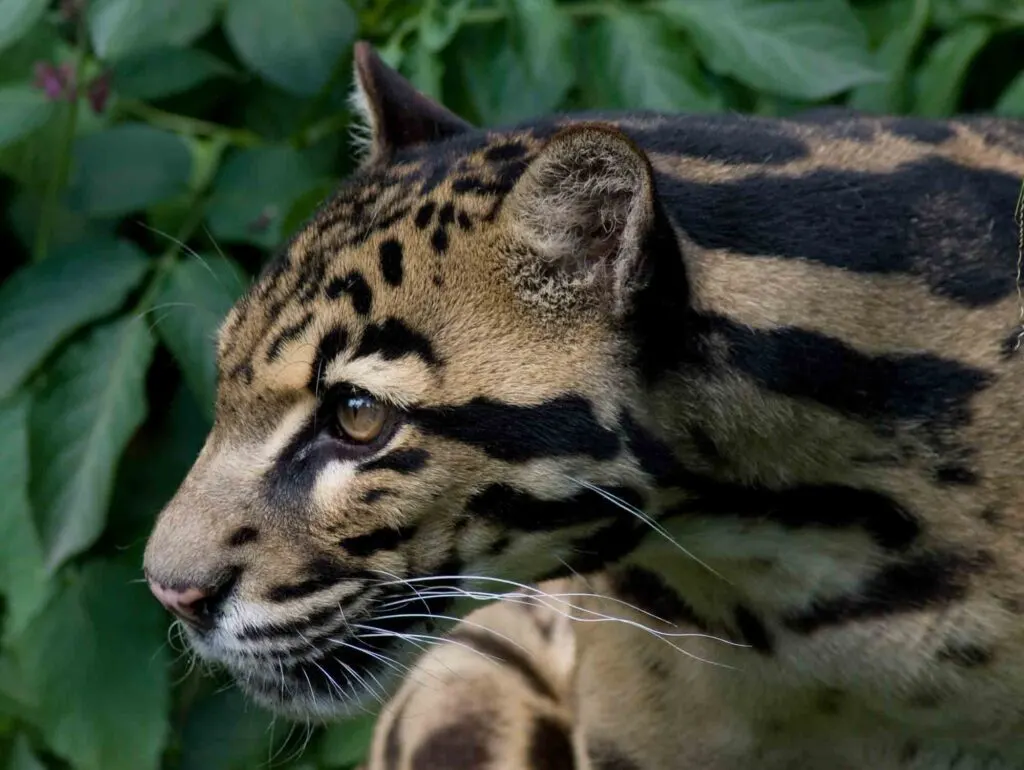
Sunda Clouded Leopard
Neofelis diardi
Sunda Clouded Leopard Scientific Classification
- Kingdom: Animalia
- Phylum: Chordata
- Class: Mammalia
- Order: Carnivora
- Family: Felidae
- Genus: Neofelis
- Species: Neofelis diardi
Sunda Clouded Leopard Appearance
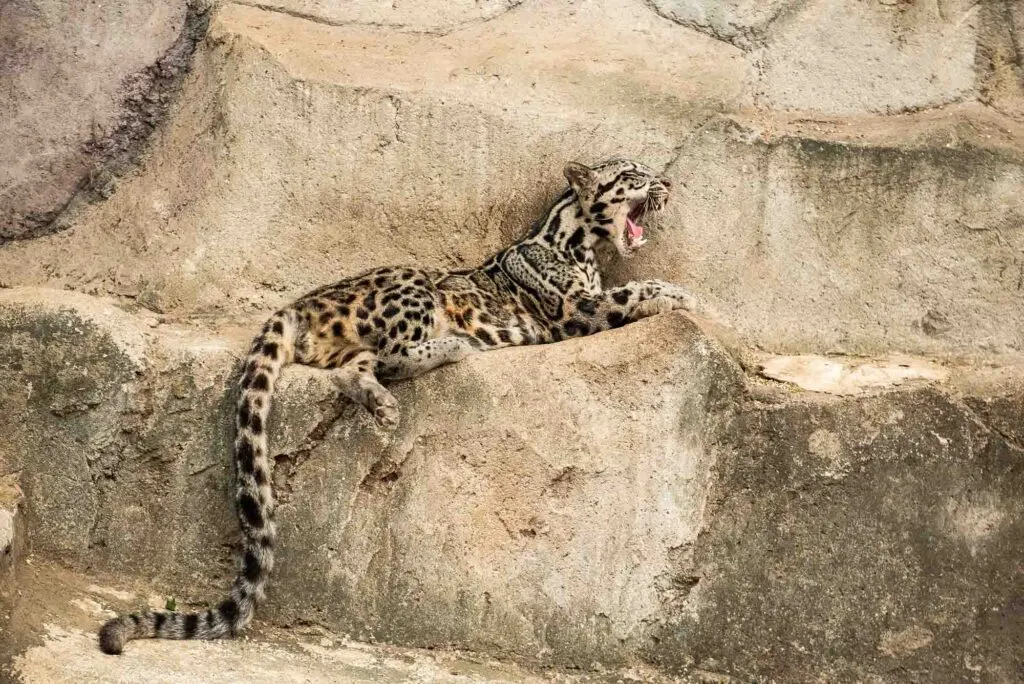
- Lifespan: 11 to 17 years
- Length: 27 to 41 inches
- Height: 20 inches
- Weight: 26 to 57 pounds
- Top speed: 40 mph
Sunda clouded leopards are stunning wild cats. They’re often called “stocky” — and in many ways, they are the pit bulls of the Felidae family.
How Big Is a Sunda Clouded Leopard?
In terms of size, Sunda clouded leopards fall in the middle of the wild cat pack. These wild cats tip the scales between 26 and 57 pounds are usually 27 to 41 inches long and stand about 20 inches high. On average, male clouded leopards are twice the size of females.
What Do Sunda Clouded Leopards Look Like?
Their fur is a tawny yellow, sometimes accented with gray undertones, with black spots. Unlike other leopard species, however, their spots aren’t solid.
Instead, they have cloud markings, and the bigger splotches are filled with smaller ones.
Sunda clouded leopards also have two wide and commanding stripes that run from the tops of their heads down the length of their backs. Individuals’ underbellies can be either white or pale yellow.
Do Sunda Clouded Leopards Have Good Eyesight?
Visually, their irises range from brownish-yellow to grayish-green, their pupils are oblong, and their vision is far superior to humans’. Vocally, due to the Sunda clouded leopard’s ossified hyoid bone, they can achieve various sounds in a range of pitches, including purring.
Teeth and Tail
Sunda clouded leopard tails fall on the long side of the scale for wild cats, and they improve their balance. Many individuals have tails as long as their bodies. They’re marked with rings and capped with a black or gray tip. Their large paws with long claws give them advanced agility.
Sunda clouded leopards have 32 teeth, and their canine teeth are two inches long. In proportion to their head size, that’s longer than any other felid species.
Did you know? They’re known by several names, including the Sundaland clouded leopards, Enkuli clouded leopard, Diard’s clouded leopard, and Diard’s cat, and there are currently two subspecies.
Sunda Clouded Leopard Range & Habitat
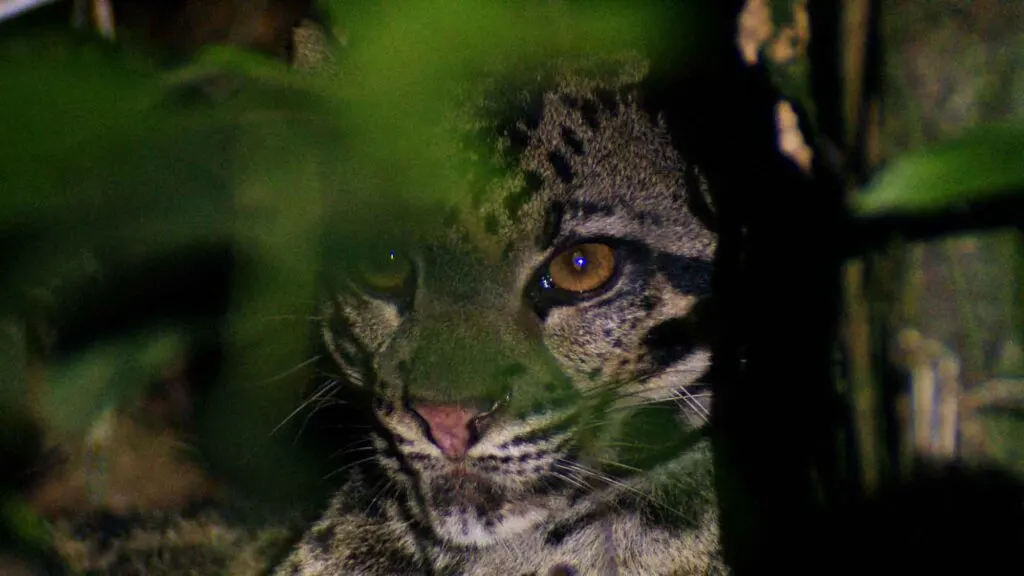
Scientists have only been able to confirm the presence of Sunda clouded leopards in Borneo and Sumatra, which are part of a biogeographical region known as Sundaland in Southeast Asia.
There’s some speculation the species may be present on the Batu Islands, but a confirmed sighting has yet to happen.
In Borneo, Sunda clouded leopards live in lowland rainforests, tropical forests, mangroves, and logged forests below 4,900 feet.
In Sumatra, they mainly stick to mountain foothills and montane ecosystems along the spine of the Sumatran Mountains.
In terms of numbers, Sunda clouded leopards are six times more common in Borneo than in Sumatra.
Interestingly, some evidence suggests that Sunda clouded leopards may be sympatric with the area’s Sumatran tigers — meaning they encounter each other frequently and possibly inter-mate.
If that’s the case, a new mixed species — akin to ligers and tigons — may be lurking around Sumatra that scientists have yet to identify.
Archeologists have dug up Sunda clouded leopard fossils on Java, but they’re thought to have gone extinct in that region in the Holocene era — which happened right after the last ice age, around 9700 B.C.
Distribution
- Continents: Asia
- Countries: Brunei, Indonesia, Malaysia
Habitats
Forest
Sunda Clouded Leopard Behavior and Lifestyle
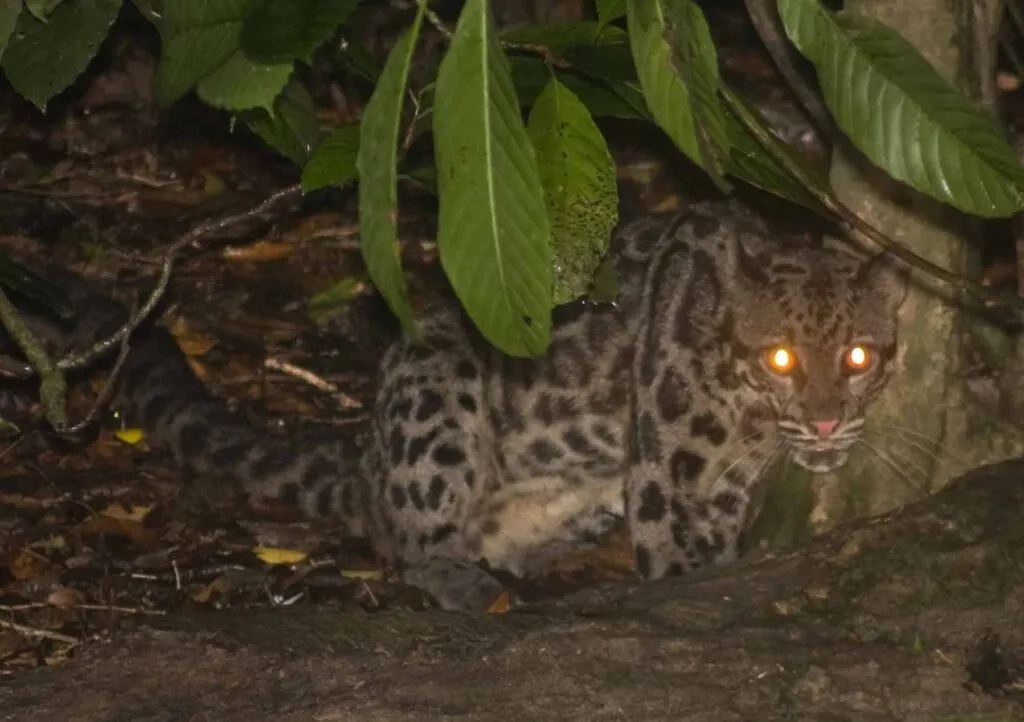
Sunda clouded leopards love trees — especially ones that hang over cliffs — and they’re super climbers. The athletic cats can climb down a trunk vertically, head-first, and hang onto branches with their hind paws.
However, due to the landscape and fauna composition of the regional habitat, individuals in Borneo are less arboreal than their counterparts in Sumatra.
Although they prefer to hang out in trees to rest and relax, they do most of their hunting terrestrially.
Generally speaking, the species is nocturnal, with some crepuscular and diurnal activity. In areas with fewer big cats — like tigers and other leopards — Sundas are more active during the day.
They aren’t particularly chatty, but Sunda clouded leopards are able to roar, shuffle, growl, hiss, and meow.
Overall, very little is known about the species’ habits because it’s a secretive creature. However, most scientists assume Sundas are solitary except during mating season. And even then, males don’t stick around to help raise the cubs.
Sunda Clouded Leopard Diet
Sunda clouded leopards are obligate carnivores — meaning they need meat to survive. In fact, they’re the largest meat-eaters on Borneo.
They hunt on the ground but have been known to ambush prey from canopy tops. After the attack, they’ll often carry catches to secluded dens or up into trees to chow down.
What do Sunda clouded leopards eat? They’re not picky and will feast on deer, birds, squirrels, porcupines, gray leaf monkeys, wild bearded pigs, young probosci’s monkeys, civets, and even fish.
Sunda Clouded Leopard Reproduction and Mating
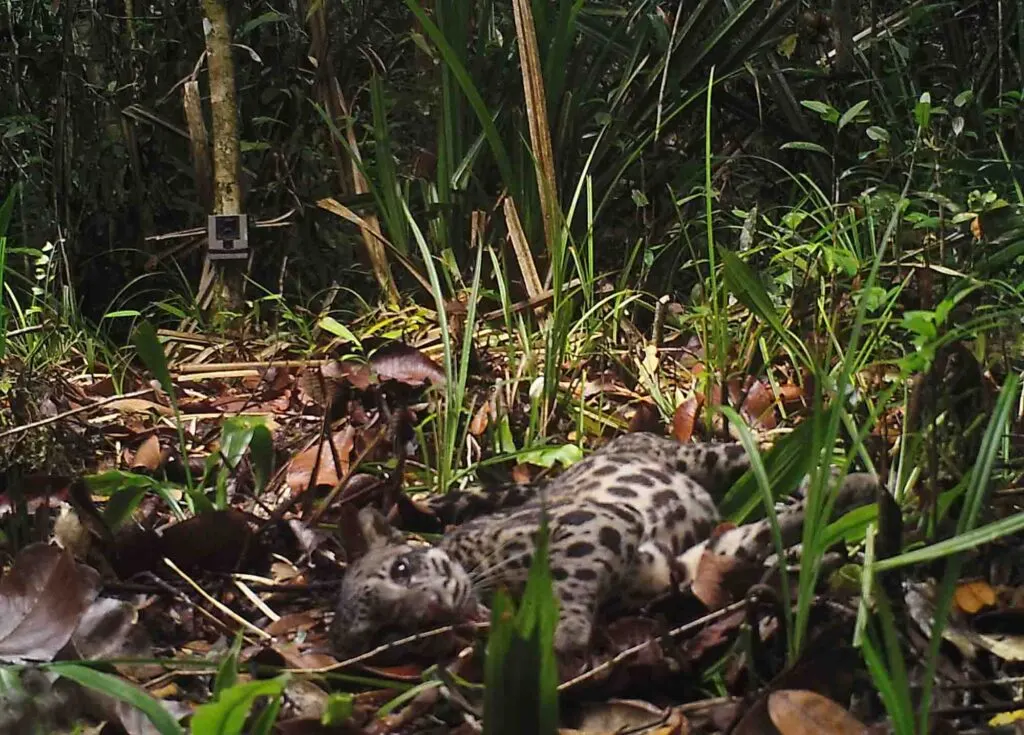
Sunda clouded leopards mate year-round, but there’s usually a spike between December and March.
Females gestate for 85 to 95 days and give birth to a litter of one to five babies. The “kids” of many wild cat species are called kittens, but Sunda babies go by cubs.
The offspring are born completely helpless, without teeth and closed eyes. They need their mothers to survive those first few weeks.
Like most planetary species, Sunda moms will grow exceptionally aggressive if their kids are around and they feel threatened.
After about 10 months, cubs leave the proverbial nest and make their way into the world. They typically reach reproductive maturity at two years old and start having litters of their own.
As far as researchers can tell from the limited available data, Sunda clouded leopards live between 11 and 17 years, with most passing away between 13 and 14.
Sunda Clouded Leopard Conservation Status
Vulnerable[1]
Sunda Clouded Leopard Predators and Threats
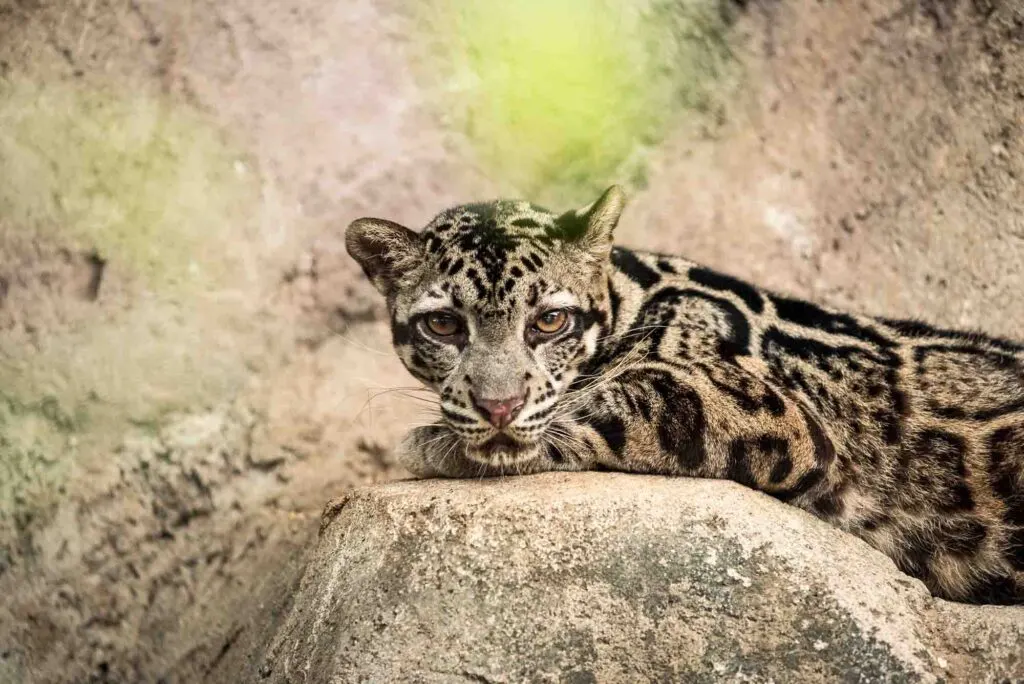
The biggest threat to Sunda clouded leopards is humans — specifically, humans who engage in deforestation initiatives, which are fueling the forest loss and forest conversion crises for hundreds of species globally.
Also, forest fires pose an additional threat, particularly in Kalimantan and in the Sebangau National Park, Borneo.
Currently, there are under 10,000 Sunda clouded leopards living in the wild, and they have a Vulnerable conservation status on the International Union for the Conservation of Nature’s Red List.
It’s also fully protected under the Convention on International Trade in Endangered Species of Wild Fauna and Flora (CITES) in Sumatra, Kalimantan, Sabah, Sarawak, and Brunei.
But the situation is growing dire by the day. Over the past decade, 30% of the species’ forest range has been diminished by clearings for settlements and oil palm plantations. On Sumatra, 80% of prime rainforest real estate has been felled!
In addition to habitat loss and population fragmentation, Sunda clouded leopards are frequently victims of poaching. Their furs are highly desired on the black market, and their parts are still used in traditional Asian medicines, which obviously decreases their population size.
Sunda clouded leopards don’t have many natural predators in many territories, but they occasionally fall prey to tigers. However, due to their impressive speed and climbing skills, Sundas are tough to catch.
Sunda Clouded Leopard Facts
Here’s a couple of fun facts about the Sunda clouded leopard:
- The scientific name for Sunda clouded leopards is Neofelis diardi. Neofelis is a portmanteau of the Greek word νεο, meaning “new, fresh, strange,” and the Latin word feles, which means “cat.” Translated into English, Neofelis means “new cat.”
- Researchers identified Sunda clouded leopards as its own species in 2006. Before then, scientists believed they were the same species as mainland clouded leopards. However, DNA testing revealed distinct chromosome sets. The two species have been separated for nearly three million years.
- Poaching is still a huge problem for Sunda clouded leopards. According to one report, between 2011 and 2019, body parts of 32 individuals were seized by animal control officials. Contraband included 17 live individuals and six skins, in addition to several canines and claws. Jakartan authorities confiscated at least one live animal ordered by a Kuwaiti buyer.
- The Indonesian name for clouded leopards is rimau-dahan, which means “tree tiger” or “branch tiger.” In Sarawak, a Malayic region and language, they are known as entulus.
- A female Sunda clouded leopard is known as a leopardess, and males are called leopards.
- Currently, there are two subspecies of Sunda clouded leopard: Neofelis diardi borneensis and the Neofelis diardi diardi. The former lives in Borneo and the latter in Sumatra.
- Sunda clouded leopards are fast! They can cruise along at up to 40 miles per hour.
- The first person believed to have recorded a clouded leopard was Pierre-Médard Diard. He sent a sketch of one to the National Museum of Natural History in France in 1823.
